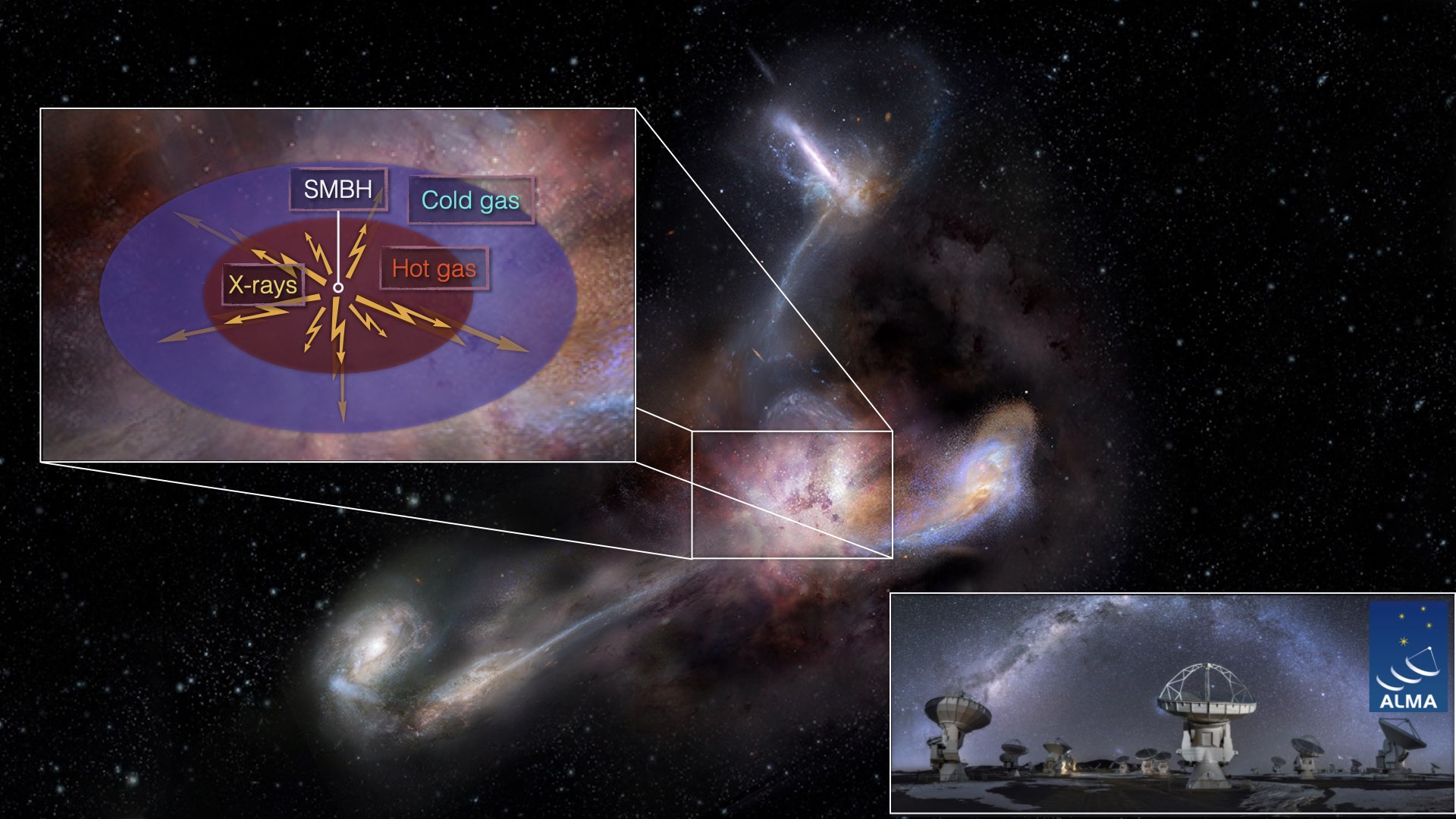The extreme environment of the most luminous obscured galaxy
In the center of most galaxies, gigantic hidden monsters called supermassive black holes live. When gas and dust from the galaxy fall towards them, it starts spinning incredibly fast, forming a very hot disc that often outshines the brightness of the whole galaxy. This phase is what astronomers call active galactic nuclei, or quasars.

Among all the galaxies with quasars in the Universe, W2246-0526 is the most luminous ever observed, shining brighter than 300 trillion suns. The time light took to reach us from this faraway galaxy at redshift 4.6 implies we are observing it as it was when the Universe was only 1.3 billion years old. W2246-0526 is also not just a conventional quasar: its host galaxy is a Hot Dust Obscured Galaxy (Hot DOG), given that most of its extremely high luminosity is radiated by hot dust that is obscuring the object.
In a recent A&A paper, Roman Fernandez Aranda and Tanio Diaz Santos, both from the Institute of Astrophysics at FORTH in Crete, and their collaborators presented a set of new observations of W2246-0526 with the Atacama Large Sub/millimiter Array (ALMA). The observations were taken in seven ALMA bands, including the hard-to-observe Bands 9 and 10, for the brightest far-infrared fine-structure emission lines: [OI]63μm (the first detection ever with ALMA), [OIII]88μm, [NII]122μm, [OI]145μm, [CII]158μm, [NII]205μm, [CI]370μm, and [CI]609μm. In their work, the researchers combined these observations with a large grid of radiative transfer models, and found that the conditions of the interstellar medium of the galaxy need to be extreme: high hydrogen density and extinction, together with extreme ionization and high X-ray to UV ratio. Moreover, in this work they also hypothesize that the X-ray emission must not only be very large but also confined to the galaxy core, with large amounts of molecular gas located far away from the central monster, where it can survive.
This work sheds light on the extreme conditions that galaxies can experience during the early stages of the Universe, providing critical information for our understanding of how distant and young galaxies evolve."
Article: “A benchmark for extreme conditions of the multiphase interstellar medium in the most luminous hot dust-obscured galaxy at z = 4.6”, R. Fernández Aranda, T. Díaz Santos et al., 2024, A&A, 682, 166 – February 2024
